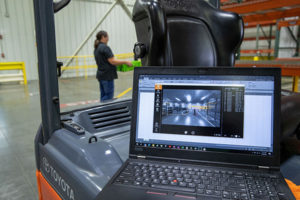Archive for October, 2022
Six Must-Have Safety Devices for Your Forklift
Forklifts are a common sight in warehouses and factories across the country. They are essential pieces of equipment for moving heavy items around safely. However, forklifts can be dangerous if not operated properly. That is why it is important to equip your forklift with the proper safety devices. In this blog post, we will discuss six of the most important safety devices for forklifts.
- Overhead guard
- Proximity sensor
- Backup alarm
- Fork positioner
- Seat belt
- Forklift camera system
1. OVERHEAD GUARD
Every day, forklift operators have a commitment to safety and protection for themselves and those around them. Toyota forklifts have overhead guards designed to help protect operators from falling objects and other obstructions in your facility. All forklifts, no matter the brand, should be equipped with an overhead guard that meets or exceeds OSHA standards.
2. PROXIMITY SENSOR

Proximity sensors are another important safety device for forklifts. They help to prevent collisions by detecting objects in the path of the forklift.
Toyota’s all-new SEnS Smart Environment Sensor™ (SEnS) pedestrian detection system can assist operators in identifying a pedestrian or object behind their forklift during a shift. SEnS uses advanced technology and proprietary algorithms to distinguish between these obstacles.
SEnS can detect objects up to 32 feet away. If within a detectible range, a buzzer and four indicator lights will alert the operator that a pedestrian or object is within a certain range of the rear of the forklift.
With Toyota’s SEnS sensor, you can program up to three detection zones with different audible and visual alarms for each zone. The frequency in which the buzzer sounds and warning lights blink increases as the pedestrian or object enters a zone closer to the rear of the forklift. Detection zones can be configured to meet various customer applications.
SEnS is available on new Toyota forklifts. It can also be retrofitted for select Toyota forklift models currently in use. SEnS works with multiple input voltages and fits a variety of applications.
The following Toyota Forklifts are currently compatible with Toyota’s SEnS. Please check with your local dealer on the availability of these products.
- 3-Wheel Electric Forklift
- Core Electric Forklift
- Core IC Cushion Forklift
- Large IC Cushion Forklift
- Core IC Pneumatic Forklift
- Mid IC Pneumatic Forklift
- Large IC Pneumatic Forklift
- Box Car Special Forklift
- Paper Roll Special Forklift
3. BACKUP ALARM
Another important safety device for forklifts is a backup alarm. This warns pedestrians and other operators when the forklift is backing up. This is especially important in busy warehouses where there is a lot of foot traffic.
4. FORK POSITIONER
Fork positioners are another must-have safety device for forklifts. They allow operators to move the forks quickly and safely from the operator seat. There are several types of fork positioners, so ask an expert to decide which one is right for you.
5. SEAT BELT
Most forklifts come standard with a seat belt. This is a critical safety feature that should always be used when operating the forklift. A seat belt keeps the operator securely in the seat in case of a sudden stop or collision and reduces the severity and incidence of injuries in the event of a tip-over.
6. FORKLIFT CAMERA SYSTEM
Operator safety is further enhanced with the forklift camera system. This system gives the operator a clear view of the area behind the forklift. It is especially helpful in busy warehouses where there is a lot of foot traffic.
These are just a few of the most important safety devices for forklifts. Be sure to equip your forklift with these devices to help keep your workplace safe. If you need help outfitting your forklifts with safety equipment, our material handling experts can help. Click here to set up a free onsite consultation.
We also offer forklift operator safety training. Sending operators to forklift training to improve safety and increase efficiency isn’t just a good idea – OSHA certification is a requirement. Keep your operators and pedestrians safe and increase productivity with professional training from Toyota Material Handling Solutions. Click here to sign up.
FAQs About Ending a Forklift Lease
Is the lease on your material handling equipment ending soon? We answer all our frequently asked questions about ending a lease with TICF here. Find out what options are available and the steps to simplify the process.
What options do I have at the end of the lease?
- The first option is to return your equipment and purchase or lease a new Toyota. You can get a new model of your current equipment or try another piece of equipment altogether. It is an excellent way to upgrade your material handling equipment to the latest model with all the new ergonomic and technological features.
- If you no longer need your material handling equipment, the second option is to return the equipment at the end of the lease.
- The third option, available under certain conditions, is to purchase your material handling equipment at the end of the lease. Contact your local dealer to discuss purchase options and the payoff process.
- If you still need the equipment but can’t or don’t want to purchase it, the fourth option is to keep your current equipment as a rental. Ask your local dealer for rental details and pricing.
What steps do I need to take at the end of the lease?
- Make sure you pay all payments and fees to TICF.
- Schedule a lease-end inspection and make any necessary repairs.
- Compare your equipment’s actual hours to the allowable hours outlined in your lease to determine if overtime charges will apply.
How do I determine actual hours on our leased equipment?
TICF put together an easy-to-use guide with information on the lease-end process. It includes detailed information to help determine actual hours on Toyota’s internal combustion and electric forklifts. Click here to read TICF’s Lease-End Guide.
We have an electric forklift. Should we do anything differently?
If you are returning an electric forklift, remember to return all battery components at the end of the lease.
What is the best way to avoid additional charges?
Schedule a complimentary lease-end inspection and perform any necessary repairs to help avoid Excessive Wear & Use charges.
What are examples of excessive wear and use?
A few examples are broken lights, corroded batteries, and damaged seats. For more information on what is considered excessive, review TICF’s Excessive Wear and Use Guidelines.
What if I have other questions about ending my lease?
Click here to visit TICF’s website to find out everything you need to know about ending a lease with TICF. You can also contact your local dealer or us to talk to a material handling expert to help you decide what lease-end approach is best for you.
